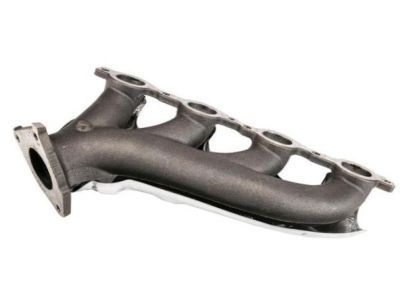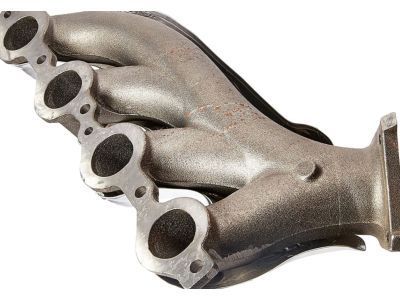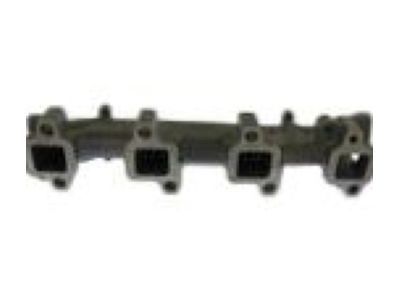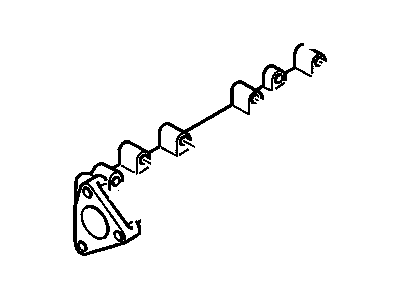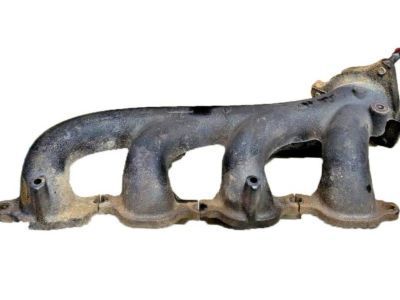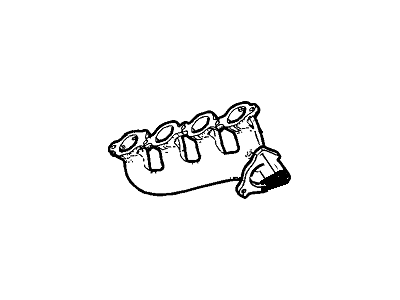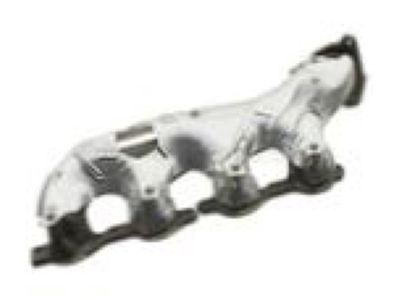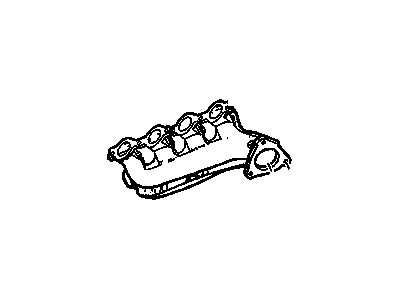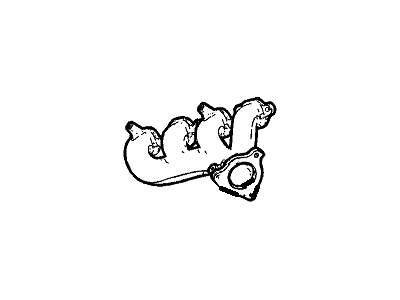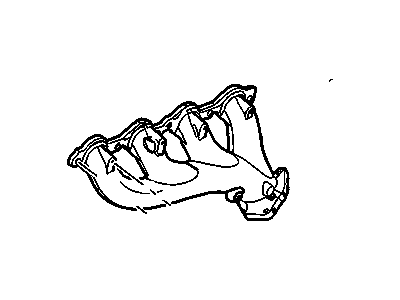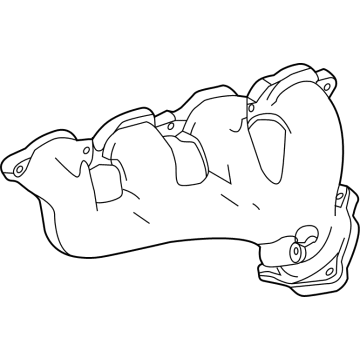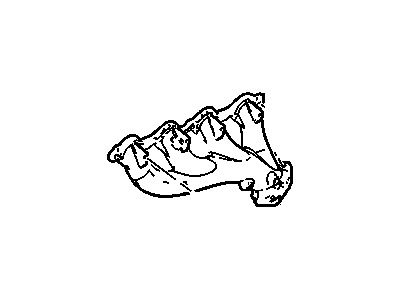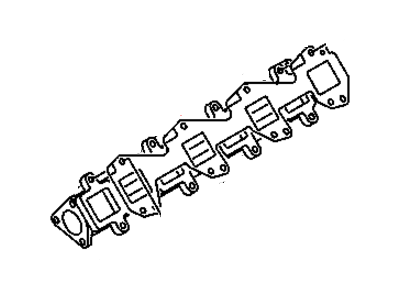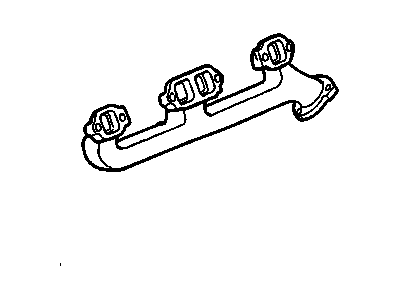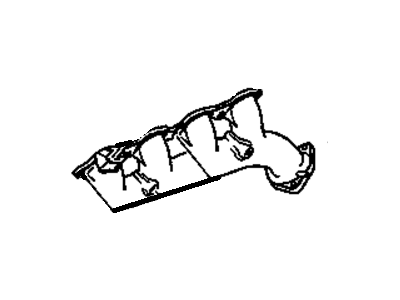
My Garage
My Account
Cart
Genuine Cadillac Escalade Exhaust Manifold
Engine Exhaust Manifold- Select Vehicle by Model
- Select Vehicle by VIN
Select Vehicle by Model
orMake
Model
Year
Select Vehicle by VIN
For the most accurate results, select vehicle by your VIN (Vehicle Identification Number).
23 Exhaust Manifolds found
Cadillac Escalade Engine Exhaust Manifold
Part Number: 12616285$131.11 MSRP: $224.19You Save: $93.08 (42%)Cadillac Escalade Engine Exhaust Manifold
Part Number: 12624683$326.21 MSRP: $520.25You Save: $194.04 (38%)Cadillac Escalade Exhaust Manifold
Part Number: 12629338$156.98 MSRP: $268.42You Save: $111.44 (42%)Cadillac Escalade Engine Exhaust Manifold
Part Number: 12616286$205.82 MSRP: $351.92You Save: $146.10 (42%)Ships in 1-2 Business DaysCadillac Escalade Exhaust Manifold
Part Number: 12629337$156.98 MSRP: $268.42You Save: $111.44 (42%)Ships in 1-2 Business DaysCadillac Escalade Exhaust Manifold Assembly
Part Number: 12677665$227.59 MSRP: $362.98You Save: $135.39 (38%)Ships in 1-2 Business DaysCadillac Escalade Manifold Assembly, Exh
Part Number: 55513001$117.36 MSRP: $176.03You Save: $58.67 (34%)Ships in 1-3 Business DaysCadillac Escalade MANIFOLD-EXH
Part Number: 12713621$236.28 MSRP: $376.77You Save: $140.49 (38%)Ships in 1-3 Business DaysCadillac Escalade Manifold, Exh
Part Number: 12701715$260.19 MSRP: $394.23You Save: $134.04 (34%)Ships in 1-3 Business Days
| Page 1 of 2 |Next >
1-20 of 23 Results
Cadillac Escalade Exhaust Manifold
Cadillac Escalade vehicles' Exhaust Manifold is significant in channeling hot exhaust gases from the engine to the exhaust system which is very important to the performance of the engine and the environment since it minimizes emission of bad gases into the atmosphere. Situated at the top of the exhaust system, the manifold gathers exhaust from several cylinders and directs it through the catalytic converter, as well as the muffler. This design further reduces intake reversion a condition that has been known to reduce the overall efficiency of engines. Years have gone and there has been a number of Cadillac Escalade models using different types of exhaust manifolds depending on cast iron or stainless steel. To provide consumers with more choices, practical headers are also manufactured with the objective of reducing flow restriction and thus improving engine performance by increasing exhaust gas velocity. The variation between these styles does feature modelling how they are built and their performance oriented characteristics, whereby headers have greater efficiency than manifolds. Exhaust manifold is a crucial component in any car and it plays an important role in Cadillac Escalade since its performance and safety of passengers from dangerous fumes emanating from exhaust leaks is an important factor.
Each OEM Cadillac Escalade Exhaust Manifold we offer is competitively priced and comes with the assurance of the manufacturer's warranty for the part. Furthermore, we guarantee the speedy delivery of your orders right to your doorstep. Our hassle-free return policy is also in place for your peace of mind.
Cadillac Escalade Exhaust Manifold Parts Questions & Experts Answers
- Q: How to remove and install the exhaust manifold in V8 engine on Cadillac Escalade?A:To remove the exhaust manifold, first disconnect the cable from the negative terminal of the battery, then raise the vehicle and support it securely on jackstands. Apply penetrating oil to the exhaust pipe-to-manifold studs and nuts, as they are often rusty. Remove the inner fender splash shield and disconnect the exhaust pipe/catalytic converter pipe from the exhaust manifold. Remove the spark plug wires by twisting the boots to loosen them and pulling only on the boots. On the left side, mark the alignment of the upper section of the steering intermediate shaft to the lower part of the steering column before removing the fasteners and separating the shafts, ensuring not to move the wheels or steering wheel to avoid damaging the airbag system clock spring. For 6.0L models, install a special tool into the steering column lower access hole to prevent rotation. On the right side, remove the oil dipstick tube if applicable. If a new manifold is to be installed, remove the heat shield and the manifold mounting bolts, then lift off the exhaust manifold and its gasket. Before installation, check the manifold for cracks and ensure the bolt threads are clean and undamaged, using a gasket scraper to clean the mating surfaces without aggressive scraping. Install the heat shields, bolts, and gaskets onto the manifold, ensuring the retaining tabs hold the assembly together. Apply a 1/4-inch wide band of medium-strength thread locking compound starting at the fourth thread, avoiding the first three threads. Place the manifold on the cylinder head and install the mounting bolts finger tight, then tighten them from the center to the ends in two steps to the specified torque. If necessary, bend the exposed end of the exhaust manifold gasket back against the cylinder head. Complete the installation in reverse order of removal and start the engine to check for exhaust leaks.
Related Cadillac Escalade Parts
Browse by Year
2024 Exhaust Manifold 2023 Exhaust Manifold 2022 Exhaust Manifold 2021 Exhaust Manifold 2020 Exhaust Manifold 2019 Exhaust Manifold 2018 Exhaust Manifold 2017 Exhaust Manifold 2016 Exhaust Manifold 2015 Exhaust Manifold 2014 Exhaust Manifold 2013 Exhaust Manifold 2012 Exhaust Manifold 2011 Exhaust Manifold 2010 Exhaust Manifold 2009 Exhaust Manifold 2008 Exhaust Manifold 2007 Exhaust Manifold 2006 Exhaust Manifold 2005 Exhaust Manifold 2004 Exhaust Manifold 2003 Exhaust Manifold 2002 Exhaust Manifold 2000 Exhaust Manifold 1999 Exhaust Manifold


